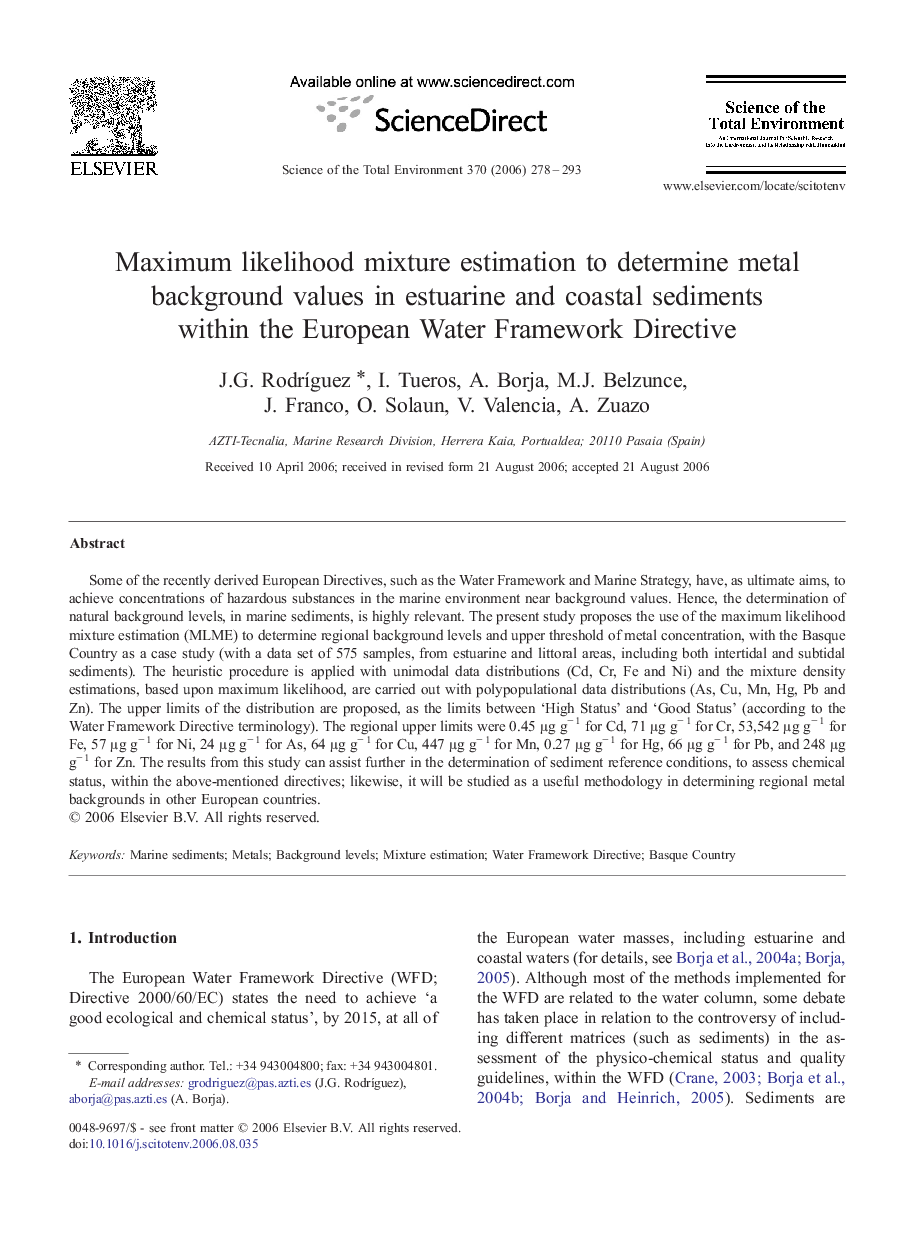| Article ID | Journal | Published Year | Pages | File Type |
|---|---|---|---|---|
| 4433656 | Science of The Total Environment | 2006 | 16 Pages |
Some of the recently derived European Directives, such as the Water Framework and Marine Strategy, have, as ultimate aims, to achieve concentrations of hazardous substances in the marine environment near background values. Hence, the determination of natural background levels, in marine sediments, is highly relevant. The present study proposes the use of the maximum likelihood mixture estimation (MLME) to determine regional background levels and upper threshold of metal concentration, with the Basque Country as a case study (with a data set of 575 samples, from estuarine and littoral areas, including both intertidal and subtidal sediments). The heuristic procedure is applied with unimodal data distributions (Cd, Cr, Fe and Ni) and the mixture density estimations, based upon maximum likelihood, are carried out with polypopulational data distributions (As, Cu, Mn, Hg, Pb and Zn). The upper limits of the distribution are proposed, as the limits between ‘High Status’ and ‘Good Status’ (according to the Water Framework Directive terminology). The regional upper limits were 0.45 μg g− 1 for Cd, 71 μg g− 1 for Cr, 53,542 μg g− 1 for Fe, 57 μg g− 1 for Ni, 24 μg g− 1 for As, 64 μg g− 1 for Cu, 447 μg g− 1 for Mn, 0.27 μg g− 1 for Hg, 66 μg g− 1 for Pb, and 248 μg g− 1 for Zn. The results from this study can assist further in the determination of sediment reference conditions, to assess chemical status, within the above-mentioned directives; likewise, it will be studied as a useful methodology in determining regional metal backgrounds in other European countries.
